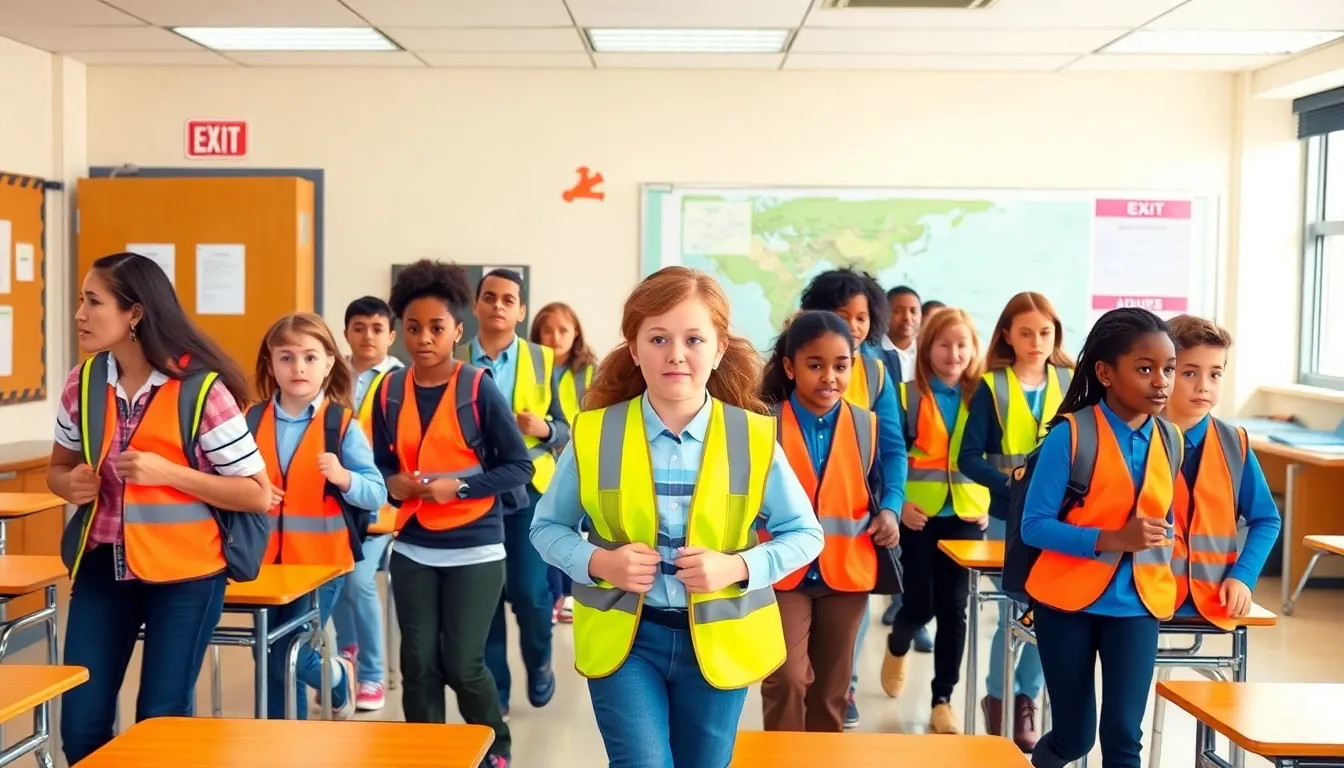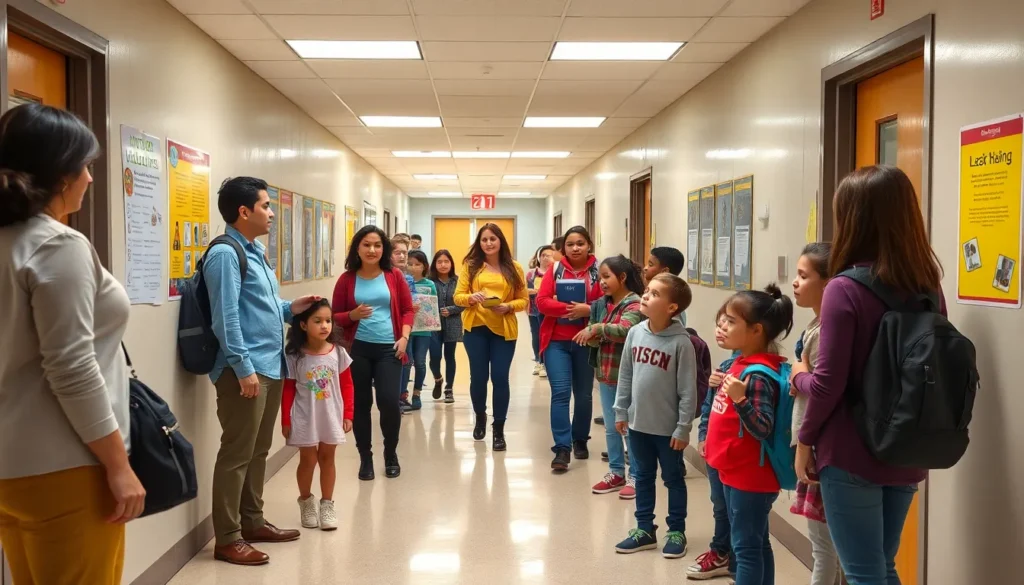In today’s unpredictable world, schools need to be more than just places for learning; they must also be prepared for the unexpected. Imagine a classroom where students are not only mastering math but are also ready to tackle emergencies with the same enthusiasm they show for recess. Emergency preparedness in schools isn’t just a good idea; it’s essential for keeping everyone safe when the unexpected strikes. From natural disasters to unforeseen incidents, having a solid plan can make all the difference. It’s not about turning classrooms into survivalist bunkers; it’s about fostering a culture of readiness and resilience. With the right strategies in place, schools can transform potential chaos into calm, ensuring that students and staff are equipped to handle whatever comes their way. So let’s dive into the world of emergency preparedness and discover how schools can become beacons of safety and confidence.
Emergency Preparedness For Schools
Emergency preparedness in schools safeguards students and staff during crises. Schools face a variety of threats, including natural disasters, health emergencies, and security incidents. Establishing a comprehensive emergency plan enables effective response to these situations. Training plays a crucial role in this preparedness. Regular drills and simulations enhance awareness and readiness among students and staff. Knowledge of protocols reduces panic during actual emergencies, fostering a culture of safety. Communication is essential in any emergency framework. Clear lines of communication between school administrators, local authorities, and families ensure that accurate information flows quickly. Utilizing multiple communication platforms, such as text alerts and social media, increases reach and effectiveness. Mental health support also deserves attention during emergencies. Access to counselors helps students cope with the emotional aftermath of crises. Integrating mental health resources into emergency plans can mitigate long-term psychological effects. Collaboration with local emergency services strengthens school safety strategies. Partnerships with police, fire departments, and medical professionals provide essential guidance on handling various scenarios. Engaging with these services fosters a supportive community network prepared to act swiftly. Successful emergency preparedness promotes a sense of security within the school environment. When students and faculty feel safe, they can focus on learning and personal growth. Establishing a resilient school culture underpins the overall educational mission and contributes to better academic outcomes.Key Components Of Emergency Preparedness Plans

Risk Assessment and Analysis
Risk assessment and analysis form the foundation of any emergency preparedness plan. Schools must identify potential threats, including natural disasters, health crises, and security incidents. Evaluation involves examining historical data and local risks to prioritize concerns specific to each environment. Identifying vulnerabilities helps schools allocate resources efficiently. Regular reassessment aids in adapting to changing conditions and evolving threats. Engaging with local disaster response agencies enhances the understanding of regional risks further and ensures plans remain current.Emergency Response Procedures
Emergency response procedures outline specific actions during various incidents. Clear guidelines for evacuation, lockdown, and shelter-in-place scenarios are essential. Procedures must be easy to understand, ensuring that all staff and students can follow them without confusion. Training staff through drills and simulations strengthens familiarity with these procedures. Communication protocols play a crucial role by facilitating information flow between schools, families, and local authorities. Keeping a stock of essential supplies further supports effective responses during emergencies. Continuous evaluation and updates to these procedures reinforce readiness, contributing to a safer school environment.Training and Drills
Effective training and drills enhance emergency preparedness in schools. Regular practice instills confidence and readiness among both staff and students.Staff Training Programs
Training programs for staff should focus on emergency response procedures and crisis management. Workshops and simulations allow educators to develop critical skills. By participating in these programs, they can effectively lead during an incident. Scheduled training sessions alongside local emergency services encourage collaboration. Documenting training activities and outcomes provides a framework for continual improvement. Regular updates ensure staff remain informed about the latest protocols and best practices.Student Involvement and Education
Involving students in emergency preparedness creates a culture of safety. Schools should integrate emergency response education into the curriculum. Engaging students with hands-on drills fosters understanding and retention. Peer-led initiatives can motivate participation while reinforcing critical skills. Regularly communicating emergency procedures builds confidence and awareness. Feedback from students after drills helps identify areas for improvement, ensuring a comprehensive approach to preparedness.Communication Strategies
Effective communication strategies are vital for ensuring safety and preparedness in schools during emergencies. Schools must prioritize clear channels for disseminating information.Emergency Notifications
Timely emergency notifications keep students, staff, and families informed. Using various platforms such as text messages, emails, and mobile apps increases accessibility. Notifications must include essential information such as the nature of the emergency, specific actions to take, and updates as situations evolve. Regular testing of notification systems enhances reliability. Schools also benefit from establishing a designated point of contact for emergency communications to streamline information delivery.Parent and Community Engagement
Engaging parents and the community fosters a supportive environment for emergency preparedness. Schools should organize informational sessions and workshops to discuss emergency plans and response protocols. Building strong relationships with local organizations enhances resource availability during crises. Communication tools, like newsletters and social media, can keep everyone informed about ongoing preparedness efforts. Involving parents in drills allows them to understand school processes better and reinforces their ability to support students during emergencies.Resource Allocation
Effective resource allocation plays a crucial role in enhancing emergency preparedness in schools. Schools must consider various factors while planning to ensure safety and resilience.Budget Considerations
Budget considerations significantly impact emergency preparedness initiatives. Schools need adequate funding to implement comprehensive emergency plans, including drills, training, and safety equipment. Allocating budget lines for staff training enhances response capabilities, while investing in first aid kits and emergency supplies ensures readiness. Prioritizing funds for mental health resources provides crucial support for students during crises. Schools can also explore grants and community sponsorships to supplement their budgets. The overall effectiveness of an emergency plan hinges on strategic financial planning.Partnerships with Local Agencies
Partnerships with local agencies strengthen emergency preparedness efforts. Collaborating with local emergency services enhances schools’ ability to respond effectively to crises. These partnerships facilitate joint training exercises, allowing both school and agency staff to understand procedures better. Establishing connections with local health departments can improve access to medical resources and expertise during health emergencies. Schools can also benefit from resources such as emergency kits, which agencies may provide. Engaging community organizations fosters a shared commitment to student safety and creates a robust support network.
These partnerships facilitate joint training exercises, allowing both school and agency staff to understand procedures better. Establishing connections with local health departments can improve access to medical resources and expertise during health emergencies. Schools can also benefit from resources such as emergency kits, which agencies may provide. Engaging community organizations fosters a shared commitment to student safety and creates a robust support network.

